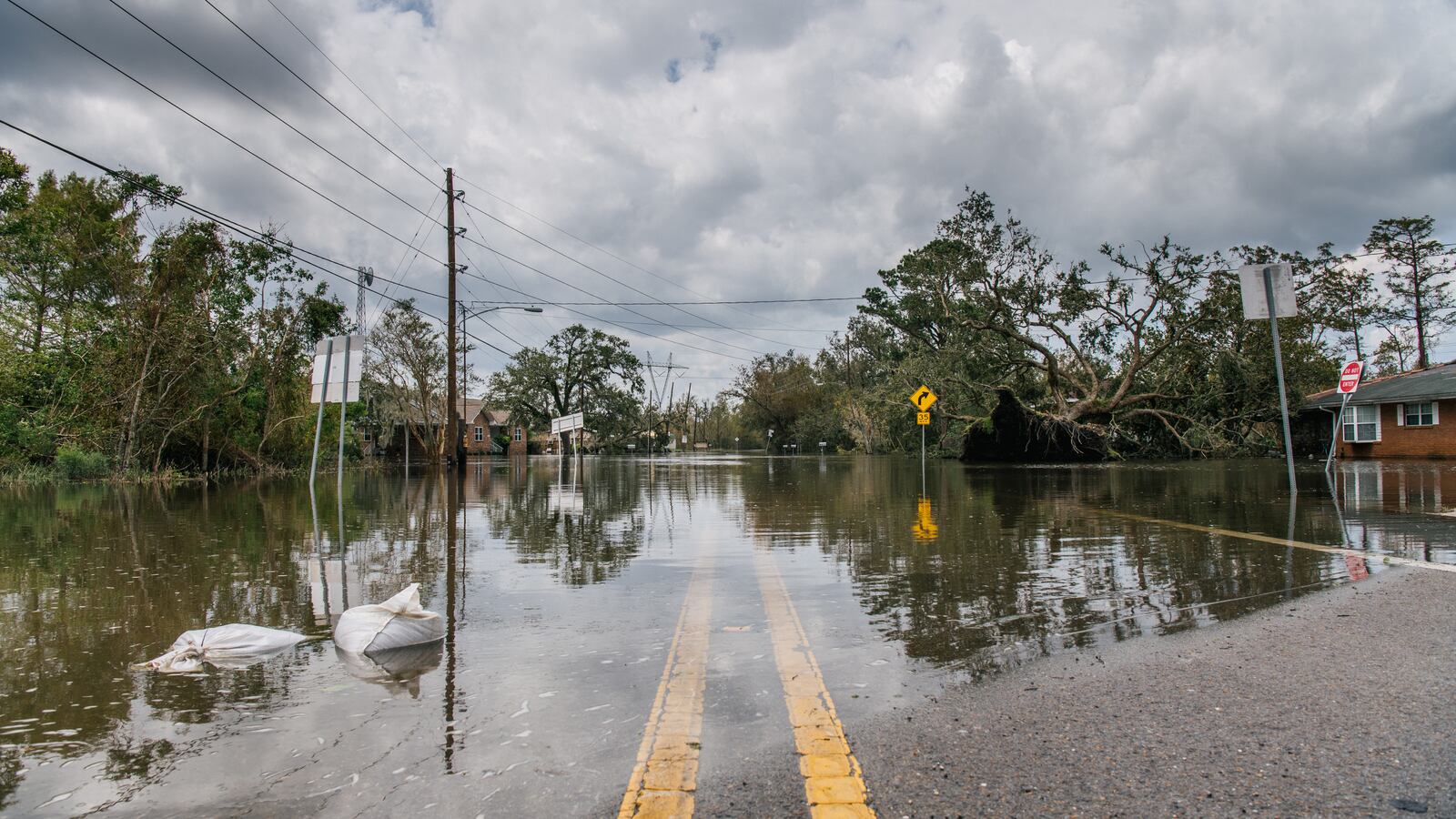More than a million Louisiana residents were still without power on Tuesday as the state began its recovery in the wake of Hurricane Ida.
Two days after the hurricane made landfall as a Category 4, ripping off roofs and claiming at least five lives, nearly 400 people and dozens of pets had been rescued either by high-water vehicles, boats or by air, the National Guard said Tuesday.
But authorities offered a grim message for the evacuees who had safely departed ahead of landfall: It’s not safe to come home yet.
“This storm was every bit as advertised,” Louisiana Gov. John Bel Edwards said at a Tuesday briefing. “The damage that we have seen here and that they’re dealing with is just catastrophic,” he said, telling evacuees that “quite frankly it’s going to be a while before you have all the conveniences and not just conveniences, the things you need to actually live.”
“The parish is without power, and we’re without water, so where you currently are now … if you’re in a safe place with water and power, that’s probably the best place for you to be,” St. John Parish President Jaclyn Hotard said.
At least five people have been confirmed dead as a result of the hurricane, including a man who was driving in floodwaters in New Orleans and a man whose home was crushed by a falling tree, among others.
On Monday, 5,300 National Guard troops from four states were activated to boost relief efforts to seek out those who were stranded amid flooding and debris.
The rescues are a part of the state’s recovery efforts as the full extent of the damage caused by Ida’s wind gusts and rains come into focus and devastation wreaked by the storm, particularly along its power grid, point at days and perhaps weeks ahead without much power.
Authorities were not able to offer much reassurance that electricity would be restored quickly to the more than a million Louisiana residents who were without power after an initial assessment that Entergy said has included roughly a crew of more than 20,000 workers struggling to restore electricity got underway on Monday.
Company executives from Entergy New Orleans, who on Monday had hesitated to make promises about how long it would take to assess and restore power, citing Ida’s “catastrophic intensity,” said Tuesday in a call with City Council members that at least some power would likely be restored in the city by Wednesday night, according to NOLA.com.
But publicly, the company has cautioned that “customers in the hardest-hit areas should plan for the possibility of experiencing extended power outages.”
“Because of the extent of damage and rebuilding required, we expect recovery to be difficult and challenging, and customers in the hardest-hit areas should expect extended power outages lasting for weeks,” the company said.
In a statement on Tuesday morning, Entergy said that it had restored power to 64,000 customers in Louisiana—roughly 7 percent—following a full day of its crews assessing damage.
Damage assessment is expected to continue and “could take several days,” since many areas remained inaccessible, the company said.
Power outages and flood waters have impacted water treatment plants, causing shortages of drinking water in some areas, the Associated Press reported. About 441,000 people in 17 parishes had no water, and an additional 319,000 faced boil-water advisories, federal officials said.
Residents across the region who rode out Ida hunted for gas on Tuesday to fuel generators, amid scorching temperatures and a heat index values for parts of Southeast Louisiana that reached 106 degrees.
Hospitals in and around New Orleans were also still fueling their operations with backup power, and some doctors and nurses at the Children’s Hospital New Orleans had yet to return to their own homes since the hospital locked down as the storm surged on Sunday morning.
“We’ve been without power for a couple of days now,” physician-in-chief Mark Kline said during an MSNBC interview on Tuesday. He said that the hospital had been working from auxiliary power and six generators that have been “working to keep all of the patient care areas lighted and the medical equipment going.”
“The nonessential parts of the hospital are dark and un-airconditioned,” he said.
Entergy has maintained that while advanced technology tools, including infrared cameras, drones and satellite imagery have helped assess damage, a lack of access to some areas like waterways and marshes could cause further delays.






